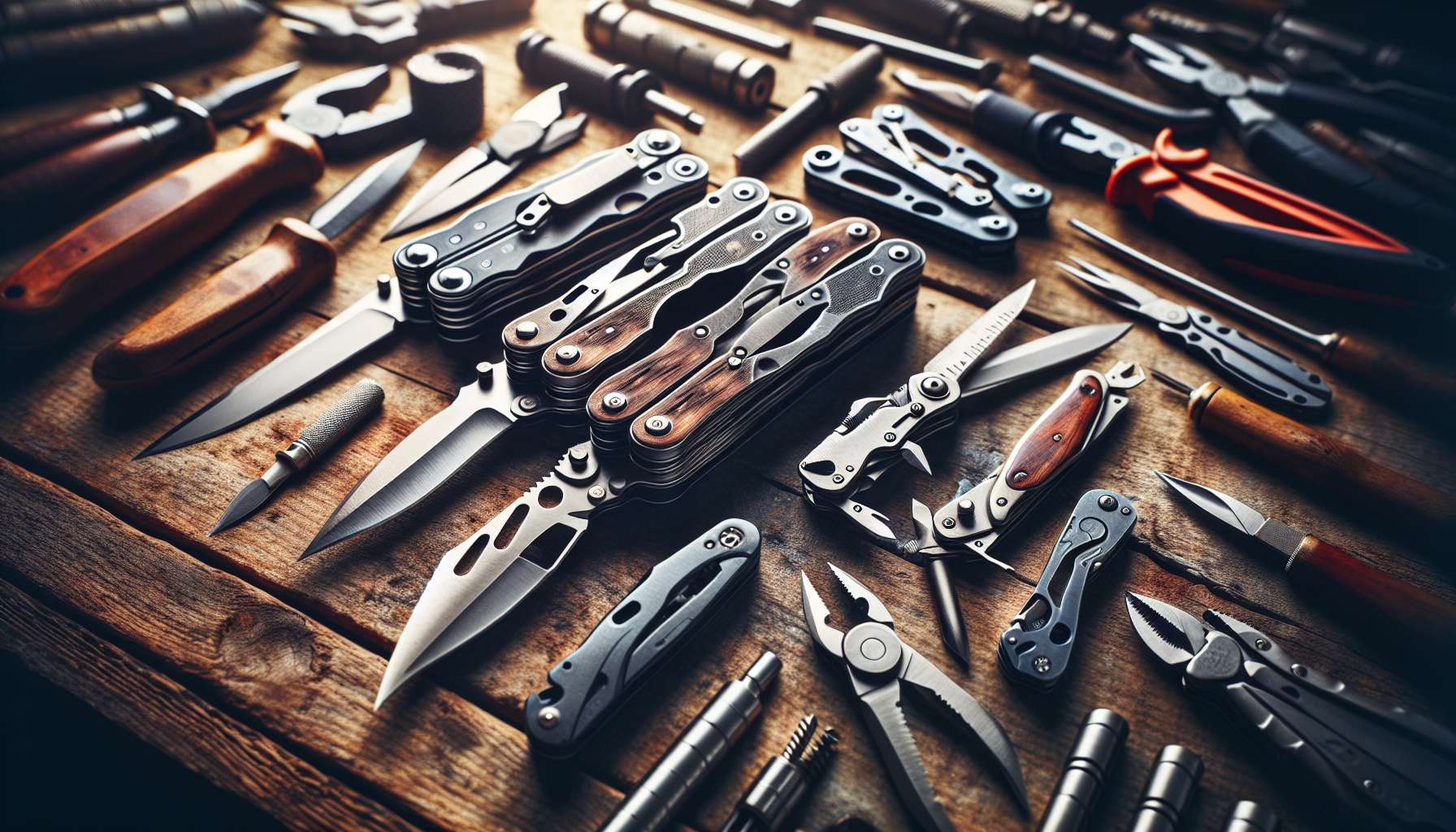Exploring the Versatility of Small Utility Knives
From opening packages to cutting through tough materials, small utility knives are indispensable tools in many settings. These compact and versatile cutting instruments have a wide range of applications, making them a must-have for DIY enthusiasts, craftsmen, artists, and everyday users alike. In this comprehensive guide, we will delve into the world of small utility knives, exploring their history, uses, controversies, and much more. So, grab your favorite utility knife and let’s dive in!
The Evolution of Small Utility Knives
Small utility knives have a long and storied history, dating back to ancient times. The earliest versions were simple blades made from sharpened stones or obsidian, used for hunting and basic tasks. As civilizations advanced, so did the design and functionality of utility knives. The introduction of metal blades revolutionized the industry, paving the way for the modern utility knives we know today. With the advent of industrialization, utility knives became mass-produced, making them more accessible to the general public.
Today, small utility knives come in a variety of shapes, sizes, and materials, each tailored to specific tasks and preferences. From retractable blades to fixed blades, from ergonomic handles to lightweight designs, utility knives have evolved to meet the diverse needs of users across different industries.
Applications of Small Utility Knives
Small utility knives are incredibly versatile tools, finding applications in a wide range of industries and activities. In the construction industry, utility knives are used for cutting drywall, insulation, and flooring materials. Craftsmen rely on utility knives for precise cuts in woodworking, leatherworking, and other crafts. Artists use utility knives for intricate paper cutting and sculpting. In the kitchen, utility knives are essential for chopping vegetables, fruits, and meats.
Outside of professional settings, small utility knives are handy for everyday tasks such as opening packages, cutting twine, trimming plants, and more. Their compact size and sharp blades make them ideal for quick and precise cuts, making them a valuable addition to any tool kit.
The Controversy Surrounding Small Utility Knives
Despite their usefulness, small utility knives have been the subject of controversy due to safety concerns. The sharp blades of utility knives can cause serious injuries if mishandled or used improperly. This has led to debates over the regulations and restrictions surrounding the sale and use of utility knives in certain contexts.
Some organizations have implemented safety protocols to minimize the risks associated with utility knives, such as requiring training programs, safety gear, and blade disposal procedures. However, others argue that these measures are unnecessary and restrict the accessibility of utility knives for legitimate uses.
Ultimately, the debate over the safety of small utility knives continues, with proponents on both sides advocating for their respective positions. As users, it is important to exercise caution and responsibility when handling utility knives to prevent accidents and injuries.
Future Trends in Small Utility Knives
Looking ahead, the future of small utility knives is bright, with advancements in materials and design driving innovation in the industry. Manufacturers are constantly exploring new materials for blades and handles, creating utility knives that are more durable, lightweight, and versatile.
One notable trend is the rise of ergonomic designs that prioritize user comfort and safety. Utility knives with adjustable grips, blade angles, and blade storage systems are becoming increasingly popular, catering to the needs of users who require precision and efficiency in their cutting tasks.
Additionally, the integration of technology into utility knives is a growing trend, with features such as blade locking mechanisms, blade change systems, and LED lights enhancing the functionality of these tools. These innovations aim to make utility knives more user-friendly and efficient, further expanding their applications across different industries.
Expert Opinions on Small Utility Knives
To gain further insights into the world of small utility knives, we turned to experts in the field for their perspectives on these essential tools.
According to renowned knife maker John Smith, “Small utility knives are the backbone of any tool kit, offering unmatched versatility and precision in a compact package. As a craftsman, I rely on utility knives for a wide range of tasks, from shaping wood to trimming leather. Their sharp blades and ergonomic designs make them indispensable tools for professionals and hobbyists alike.”
Similarly, safety expert Sarah Johnson emphasizes the importance of proper training and handling when using utility knives. “While utility knives are incredibly useful, they can also be dangerous if not used correctly. It is crucial for users to follow safety protocols, such as wearing protective gear, disposing of blades properly, and storing knives securely to prevent accidents.”
Conclusion
In conclusion, small utility knives are versatile tools that have stood the test of time, evolving to meet the diverse needs of users across different industries. From their humble origins to their innovative designs, utility knives continue to play a crucial role in everyday tasks and specialized applications.
As we look to the future, advancements in materials, design, and technology will continue to drive the evolution of small utility knives, making them even more efficient and user-friendly. While debates over safety and regulations persist, it is essential for users to exercise caution and responsibility when handling utility knives to prevent accidents and injuries.
Whether you’re a craftsman, artist, DIY enthusiast, or simply someone in need of a reliable cutting tool, small utility knives are sure to be a valuable addition to your tool kit. So, next time you reach for a utility knife, remember the rich history, diverse applications, and ongoing innovations that make these tools indispensable in our daily lives.




